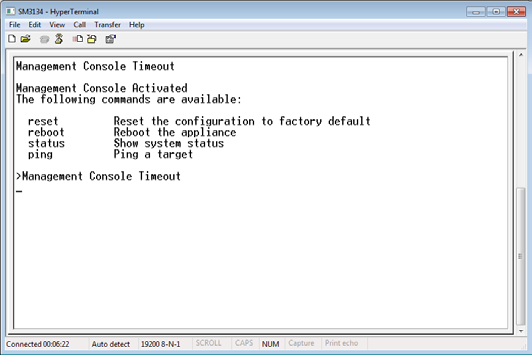
- #INSTEAD OF WEBSIT I GET TRUESTE PREFERENCE MANAGER FULL#
- #INSTEAD OF WEBSIT I GET TRUESTE PREFERENCE MANAGER WINDOWS 10#
- #INSTEAD OF WEBSIT I GET TRUESTE PREFERENCE MANAGER WINDOWS 8.1#
- #INSTEAD OF WEBSIT I GET TRUESTE PREFERENCE MANAGER ISO#
- #INSTEAD OF WEBSIT I GET TRUESTE PREFERENCE MANAGER WINDOWS 7#
Just make sure it's disabled during the installation.Īfter you've disabled Fast Startup, shut down your computer. You can re-enable Fast Startup after installing GRUB, and it seems not to cause any problems with Ubuntu/GRUB booting. More detailed instructions can be found here. Make sure the box that says "Turn on fast startup (Recommended)" at the bottom is not checked.Click "Change settings that are currently unavailable".Click "Choose what the power button does".Open Control Panel (Windows+X->Control Panel from the desktop in Windows 8+) (apparently Microsoft hates power users, so searching the Start Menu for "Control Panel" is now the fastest way to open it).Pretty cool, huh? Well, because it changes the EFI system's next-boot option, this feature will have to be disabled while you're installing GRUB. Windows 8, 8.1, and 10 use this fancy new thing called Fast Startup, which tells your firmware to load a special bootloader that restores the system to its pre-shutdown state very quickly. With Fast Startup properly disabled, it should be detected. It's very important to disable Fast Startup before installing GRUB, because whether the Ubuntu installer can detect Windows' presence depends on how Windows represents itself in the boot partition. You'll need to be logged in as an administrator to do this. Step 2: Disable Fast Startup, and shut down your computer The most straightforward way to preserve the files you don't want to lose is to just open Windows Explorer, and copy them to a backup disk.
#INSTEAD OF WEBSIT I GET TRUESTE PREFERENCE MANAGER WINDOWS 8.1#
Windows 8.1 has a "make a recovery disk" tool, but I found it useless and non-functional when it came to restoring the backup I made with it. As long as you have enough free hard drive space for your new Ubuntu partition, this process should not interfere with Windows files.
#INSTEAD OF WEBSIT I GET TRUESTE PREFERENCE MANAGER ISO#
iso for Windows 10- there is a web installer that downloads it as it installs- but, for this method, you need the.
#INSTEAD OF WEBSIT I GET TRUESTE PREFERENCE MANAGER FULL#
If you're upgrading from Windows 8.1, you can do it without downloading the full 3+ GB. Installation media for your Windows OS.A live USB or installation CD with your preferred Ubuntu distribution.It seems that if there's any MBR modification done, HP's UEFI firmware gets confused and runs back to the Windows Boot Manager, which will completely bypass GRUB. This does not work well with HP's UEFI firmware. It's meant to list the operating systems on the hard drive, and tell the firmware which one gets booted first.

The Master Boot Record is what's used in traditional BIOS firmware as a list of bootloaders stored in the boot partition (or, if written by Windows, in whichever partition is first) of your hard drive. Speaking of MBR, avoid that like the plague.

If you have already fiddled with EasyBCD, don't worry- the worst it probably did is make a mess in your EFI boot entries by writing things to the MBR.
#INSTEAD OF WEBSIT I GET TRUESTE PREFERENCE MANAGER WINDOWS 7#
I've seen a lot of outdated dual-booting tutorials that recommend EasyBCD, but it is designed to work with traditional BIOS firmware used by Windows 7 and Windows Vista, and it does not work well with newer UEFI firmware (Windows 8, 8.1, or 10). There are some things that need to be done differently when dual-booting with a UEFI system.įirstly, do not use EasyBCD. UEFI and BIOS are not the same thing a UEFI is not a BIOS, and a BIOS is not a UEFI. I read lots of things from lots of places with instructions for dual-booting with a BIOS system, that talk about UEFI as if it's just a different kind of BIOS, or an optional layer between BIOS and an OS. Both of these newer operating systems use the new(ish) UEFI firmware system, instead of the traditional BIOS system, which is where most confusions with dual-booting seem to arise.

I've done this with Windows 10, but it should also work with Windows 8.1.
#INSTEAD OF WEBSIT I GET TRUESTE PREFERENCE MANAGER WINDOWS 10#
It's also somewhat specific to the hardware in question, which requires more explanation.Īfter a lot of headache, two accidental hard drive reformattings, and lots of frustration with HP's buggy firmware implementation, I finally got Xubuntu and Windows 10 running nicely side-by-side. This is the longest post I've ever made on a StackExchange site, but this process requires a lot of explanation and attention to detail.


 0 kommentar(er)
0 kommentar(er)
